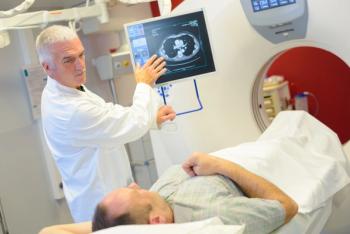
Caranx Medical wins FDA Clearance for AI heart valve guidance software
Key Takeaways
- Caranx Medical's TAVIPILOT Soft, an AI-powered software, enhances precision in TAVI by providing real-time intra-operative guidance.
- The AI system is compatible with all cardiac imaging systems and TAVI heart valves, aiming to make TAVI more accessible.
Caranx Medical's AI software advances TAVI procedures, enhancing precision and accessibility for heart valve surgeries, improving patient outcomes.
The newly approved system, called TAVIPILOT Soft, provides real-time intra-operative guidance to help position and deliver heart valves with greater precision. The software is the first of its kind to use artificial intelligence to guide this complex procedure and is compatible with all cardiac imaging systems and TAVI heart valves.
“Obtaining FDA clearance for TAVIPILOT Soft is a major achievement for the Caranx team,” said Caranx CEO Jorgen Hansen in a statement. “This clearance confirms the potential of real-time guidance in TAVI/TAVR procedures to enhance precision and improve patient outcomes. We are excited to now move forward with early commercialization by end 2025.”
TAVI procedures, introduced about 20 years ago, allow for the minimally invasive replacement of diseased aortic valves, often without open-heart surgery. However, deploying the valve accurately remains one of the biggest challenges, requiring significant skill and experience. With an estimated 1.7 million patients needing TAVI but only 300,000 procedures performed annually in the U.S. and EU, Caranx hopes its AI system can help close that gap.
The company said the software’s real-time tracking of anatomical and instrument landmarks could make TAVI accessible to more interventional cardiology centers, potentially expanding the pool of patients who benefit.
“Allowing a broader number of cardiologists and interventional cardiology centers to perform complex procedures, such as TAVI, with the Caranx AI-driven software and autonomous robot, is at the heart of our mission of entrepreneurs and business builders to save lives and revolutionize medicine,” said Philippe Pouletty, MD, founder of Caranx and CEO of Truffle Capital.
Sector overview: AI reshaping cardiovascular intervention
Artificial intelligence is playing an increasingly transformative role in
One of the major advancements in this space is the ability of AI platforms to personalize procedural guidance based on thousands of previous patient cases. These systems learn from annotated datasets to help detect subtle anatomical variations, suggest optimal access paths, and even predict procedural risks. As a result, interventional cardiologists are beginning to rely on AI not just for diagnostics, but for live, in-procedure decision support.
In addition to improving accuracy and outcomes, AI-driven tools can also shorten the learning curve for newer physicians by standardizing certain parts of the procedure and reducing reliance on years of manual experience. This is particularly valuable in complex procedures like TAVI, where errors in valve placement can have serious consequences.
Beyond aortic valve replacement, similar technologies are being developed for mitral and tricuspid interventions, vascular access optimization, and post-operative recovery monitoring. These systems are often cloud-connected, enabling continuous updates and long-term patient data analysis.
As regulators grow more comfortable with AI applications in real-time clinical settings, and as hospitals increasingly demand scalable solutions to address workforce shortages, the cardiovascular AI sector is poised for substantial growth in the next decade.
Newsletter
Stay informed and empowered with Medical Economics enewsletter, delivering expert insights, financial strategies, practice management tips and technology trends — tailored for today’s physicians.















